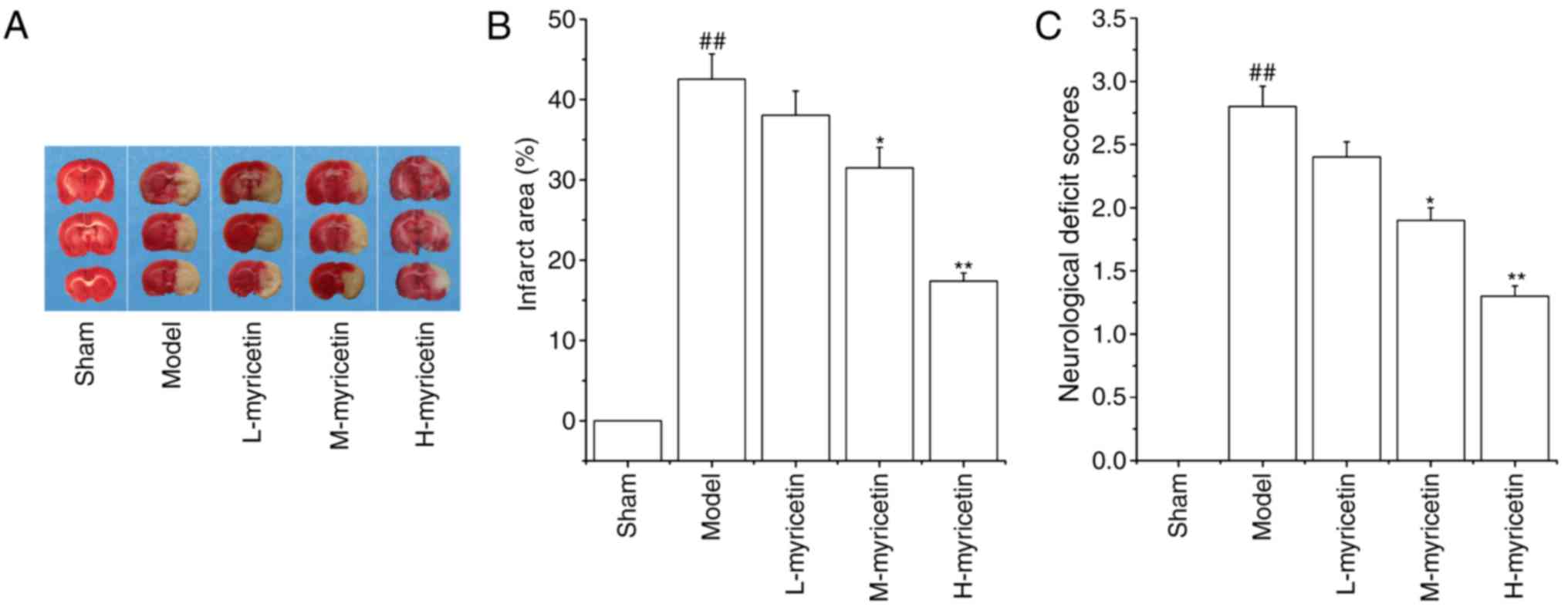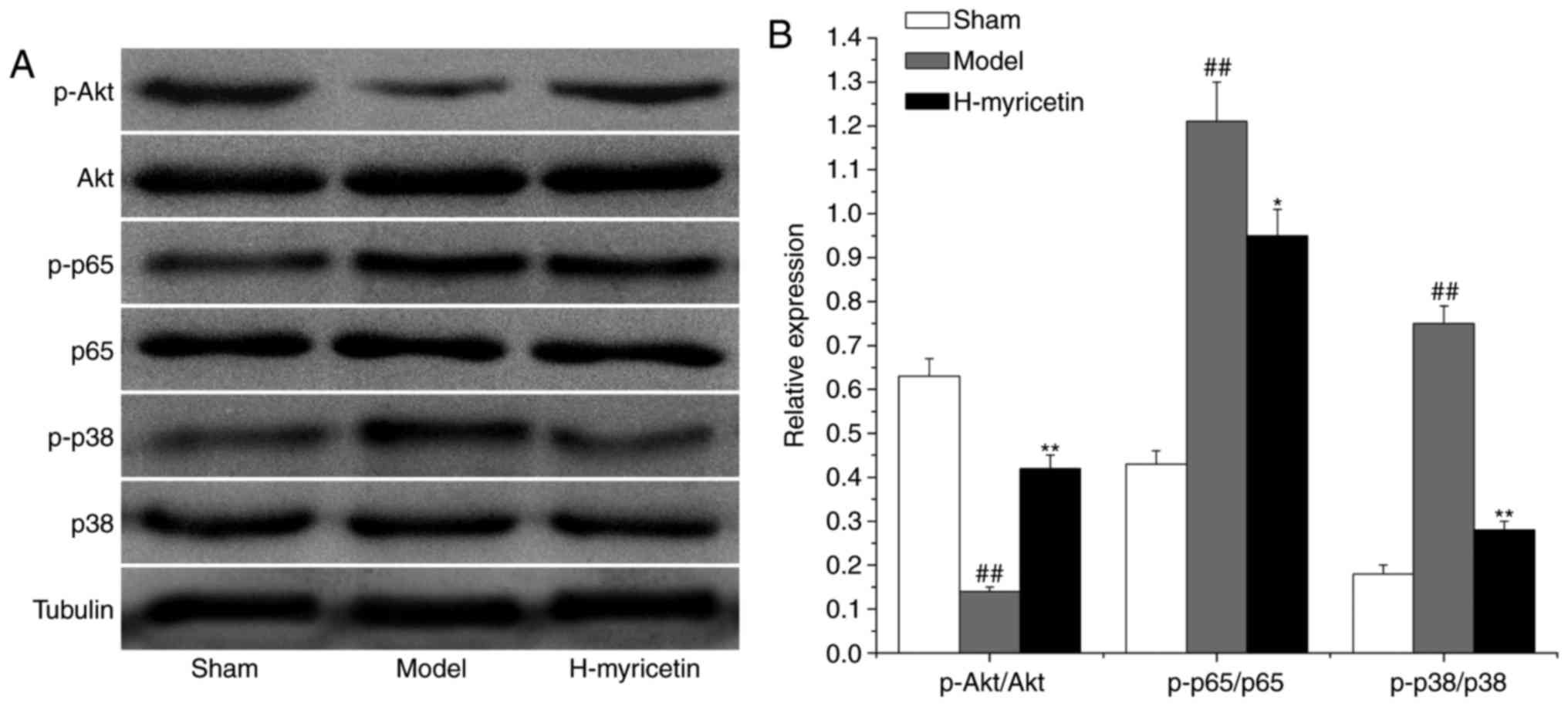|
1
|
Brill AK, Rösti R, Hefti JP, Bassetti C,
Gugger M and Ott SR: Adaptive servo-ventilation as treatment of
persistent central sleep apnea in post-acute ischemic stroke
patients. Sleep Med. 15:1309–1313. 2014. View Article : Google Scholar : PubMed/NCBI
|
|
2
|
Jovanovic A, Stolic RV, Rasic DV,
Markovic-Jovanovic SR and Peric VM: Stroke and diabetic
ketoacidosis-some diagnostic and therapeutic considerations. Vasc
Health Risk Manag. 10:201–204. 2014. View Article : Google Scholar : PubMed/NCBI
|
|
3
|
Lozano R, Naghavi M, Foreman K, Lim S,
Shibuya K, Aboyans V, Abraham J, Adair T, Aggarwal R, Ahn SY, et
al: Global and regional mortality from 235 causes of death for 20
age groups in 1990 and 2010: A systematic analysis for the Global
Burden of Disease Study 2010. Lancet. 380:2095–2128. 2012.
View Article : Google Scholar : PubMed/NCBI
|
|
4
|
Murray CJ, Vos T, Lozano R, Naghavi M,
Flaxman AD, Michaud C, Ezzati M, Shibuya K, Salomon JA, Abdalla S,
et al: Disability-adjusted life years (DALYs) for 291 diseases and
injuries in 21 regions, 1990–2010: A systematic analysis for the
Global Burden of Disease Study 2010. Lancet. 380:2197–2223. 2012.
View Article : Google Scholar : PubMed/NCBI
|
|
5
|
Writing Group Members, ; Mozaffarian D,
Benjamin EJ, Go AS, Arnett DK, Blaha MJ, Cushman M, Das SR, de
Ferranti S, Després JP, et al: Executive summary: Heart disease and
stroke statistics-2016 update: A report from the American Heart
Association. Circulation. 133:447–454. 2016. View Article : Google Scholar : PubMed/NCBI
|
|
6
|
Strong K, Mathers C and Bonita R:
Preventing stroke: Saving lives around the world. Lancet Neurol.
6:182–187. 2007. View Article : Google Scholar : PubMed/NCBI
|
|
7
|
Tewari A, Mahendru V, Sinha A and Bilotta
F: Antioxidants: The new frontier for translational research in
cerebroprotection. J Anaesthesiol Clin Pharmacol. 30:160–171. 2014.
View Article : Google Scholar : PubMed/NCBI
|
|
8
|
Liang LJ, Yang JM and Jin XC: Cocktail
treatment, a promising strategy to treat acute cerebral ischemic
stroke. Med Gas Res. 6:33–38. 2016. View Article : Google Scholar : PubMed/NCBI
|
|
9
|
Wang W, Ma X, Han J, Zhou M, Ren H, Pan Q,
Zheng C and Zheng Q: Neuroprotective effect of scutellarin on
ischemic cerebral injury by down-regulating the expression of
angiotensin-converting enzyme and AT1 receptor. PLoS One.
11:e01461972016. View Article : Google Scholar : PubMed/NCBI
|
|
10
|
Kang KA, Wang ZH, Zhang R, Piao MJ, Kim
KC, Kang SS, Kim YW, Lee J, Park D and Hyun JW: Myricetin protects
cells against oxidative stress-induced apoptosis via regulation of
PI3K/Akt and MAPK signaling pathways. Int J Mol Sci. 11:4348–4360.
2010. View Article : Google Scholar : PubMed/NCBI
|
|
11
|
Majid M, Khan MR, Shah NA, UI Haq I,
Farooq MA, Ullah S, Sharif A, Zahra Z, Younis T and Sajid M:
Studies on phytochemical, antioxidant, anti-inflammatory and
analgesic activities of Euphorbia dracunculoides. BMC Complement
Altern Med. 15:3492015. View Article : Google Scholar : PubMed/NCBI
|
|
12
|
Mendes V, Vilaça R, de Freitas V, Ferreira
PM, Mateus N and Costa V: Effect of myricetin, pyrogallol, and
phloroglucinol on yeast resistance to oxidative stress. Oxid Med
Cell Longev. 2015:7825042015. View Article : Google Scholar : PubMed/NCBI
|
|
13
|
Qiu Y, Cong N, Liang M, Wang Y and Wang J:
Systems pharmacology dissection of the protective effect of
myricetin against acute ischemia/reperfusion-induced myocardial
injury in isolated rat heart. Cardiovasc Toxicol. 17:277–286. 2017.
View Article : Google Scholar : PubMed/NCBI
|
|
14
|
Wu S, Yue Y, Peng A, Zhang L, Xiang J, Cao
X, Ding H and Yin S: Myricetin ameliorates brain injury and
neurological deficits via Nrf2 activation after experimental stroke
in middle-aged rats. Food Funct. 7:2624–2634. 2016. View Article : Google Scholar : PubMed/NCBI
|
|
15
|
Longa EZ, Weinstein PR, Carlson S and
Cummins R: Reversible middle cerebral artery occlusion without
craniectomy in rats. Stroke. 20:84–91. 1989. View Article : Google Scholar : PubMed/NCBI
|
|
16
|
Livnat A, Barbiro-Michaely E and Mayevsky
A: Mitochondrial function and cerebral blood flow variable
responses to middle cerebral artery occlusion. J Neurosci Methods.
188:76–82. 2010. View Article : Google Scholar : PubMed/NCBI
|
|
17
|
Ahn HC, Yoo KY, Hwang IK, Cho JH, Lee CH,
Choi JH, Li H, Cho BR, Kim YM and Won MH: Ischemia-related changes
in naive and mutant forms of ubiquitin and neuroprotective effects
of ubiquitin in the hippocampus following experimental transient
ischemic damage. Exp Neurol. 220:120–132. 2009. View Article : Google Scholar : PubMed/NCBI
|
|
18
|
Xiang Y, Zhao H, Wang J, Zhang L, Liu A
and Chen Y: Inflammatory mechanisms involved in brain injury
following cardiac arrest and cardiopulmonary resuscitation. Biomed
Rep. 5:11–17. 2016. View Article : Google Scholar : PubMed/NCBI
|
|
19
|
Chen YF, Wang YW, Huang WS, Lee MM, Wood
WG, Leung YM and Tsai HY: Trans-Cinnamaldehyde, An essential oil in
cinnamon powder, ameliorates cerebral ischemia-induced brain injury
via inhibition of neuroinflammation through attenuation of iNOS,
COX-2 expression and NFκ-B signaling pathway. Neuromolecular Med.
18:322–333. 2016. View Article : Google Scholar : PubMed/NCBI
|
|
20
|
Wang YS, Li YX, Zhao P, Wang HB, Zhou R,
Hao YJ, Wang J, Wang SJ, Du J, Ma L, et al: Anti-inflammation
effects of oxysophoridine on cerebral ischemia-reperfusion injury
in mice. Inflammation. 38:2259–2268. 2015. View Article : Google Scholar : PubMed/NCBI
|
|
21
|
Xu S, Zhong A, Ma H, Li D, Hu Y, Xu Y and
Zhang J: Neuroprotective effect of salvianolic acid B against
cerebral ischemic injury in rats via the CD40/NF-κB pathway
associated with suppression of platelets activation and
neuroinflammation. Brain Res. 1661:37–48. 2017. View Article : Google Scholar : PubMed/NCBI
|
|
22
|
Chanput W, Krueyos N and Ritthiruangdej P:
Anti-oxidative assays as markers for anti-inflammatory activity of
flavonoids. Int Immunopharmacol. 40:170–175. 2016. View Article : Google Scholar : PubMed/NCBI
|
|
23
|
Chen YF, Wu KJ, Huang WS, Hsieh YW, Wang
YW, Tsai HY and Lee MM: Neuroprotection of Gueichih-Fuling-Wan on
cerebral ischemia/reperfusion injury in streptozotocin-induced
hyperglycemic rats via the inhibition of the cellular apoptosis
pathway and neuroinflammation. Biomedicine (Taipei). 6:212016.
View Article : Google Scholar : PubMed/NCBI
|
|
24
|
Zhang S, Shao SY, Song XY, Xia CY, Yang
YN, Zhang PC and Chen NH: Protective effects of Forsythia suspense
extract with antioxidant and anti-inflammatory properties in a
model of rotenone induced neurotoxicity. Neurotoxicology. 52:72–83.
2016. View Article : Google Scholar : PubMed/NCBI
|
|
25
|
Zhu L, Bi W and Lu D, Zhang C, Shu X and
Lu D: Luteolin inhibits SH-SY5Y cell apoptosis through suppression
of the nuclear transcription factor-κB, mitogen-activated protein
kinase and protein kinase B pathways in
lipopolysaccharide-stimulated cocultured BV2 cells. Exp Ther Med.
7:1065–1070. 2014. View Article : Google Scholar : PubMed/NCBI
|
|
26
|
Fu P, Wu Q, Hu J, Li T and Gao F: Baclofen
protects primary rat retinal ganglion cells from chemical
hypoxia-induced apoptosis through the Akt and PERK pathways. Front
Cell Neurosci. 10:2552016. View Article : Google Scholar : PubMed/NCBI
|
|
27
|
Ying Y, Zhu H, Liang Z, Ma X and Li S:
GLP1 protects cardiomyocytes from palmitate-induced apoptosis via
Akt/GSK3b/b-catenin pathway. J Mol Endocrinol. 55:245–262. 2015.
View Article : Google Scholar : PubMed/NCBI
|
|
28
|
Qi Z, Qi S, Gui L, Shen L and Feng Z:
Daphnetin protects oxidative stress-induced neuronal apoptosis via
regulation of MAPK signaling and HSP70 expression. Oncol Lett.
12:1959–1964. 2016.PubMed/NCBI
|
|
29
|
Suchal K, Malik S, Gamad N, Malhotra RK,
Goyal SN, Chaudhary U, Bhatia J, Ojha S and Arya DS: Kaempferol
attenuates myocardial ischemic injury via inhibition of MAPK
signaling pathway in experimental model of myocardial
ischemia-reperfusion injury. Oxid Med Cell Longev.
2016:75807312016. View Article : Google Scholar : PubMed/NCBI
|
|
30
|
Apostolatos A, Song S, Acosta S, Peart M,
Watson JE, Bickford P, Cooper DR and Patel NA: Insulin promotes
neuronal survival via the alternatively spliced protein kinase CδII
isoform. J Biol Chem. 287:9299–9310. 2012. View Article : Google Scholar : PubMed/NCBI
|
|
31
|
Cheng CY, Lin JG, Tang NY, Kao ST and
Hsieh CL: Electroacupuncture at different frequencies (5Hz and
25Hz) ameliorates cerebral ischemia-reperfusion injury in rats:
Possible involvement of p38 MAPK-mediated anti-apoptotic signaling
pathways. BMC Complement Altern Med. 15:2412015. View Article : Google Scholar : PubMed/NCBI
|














